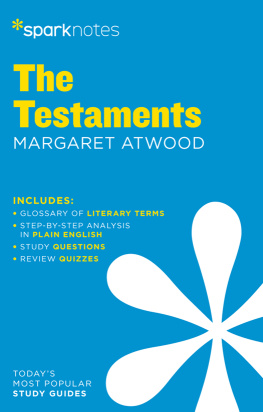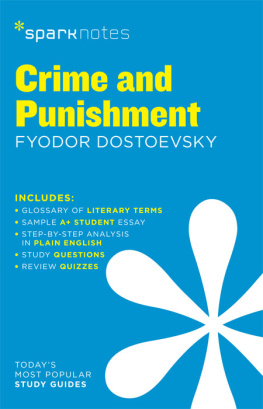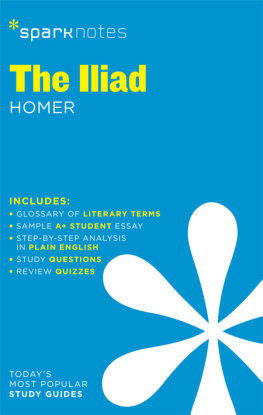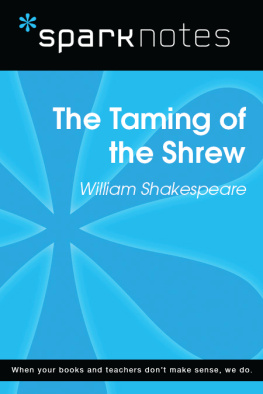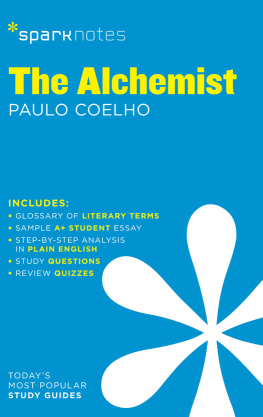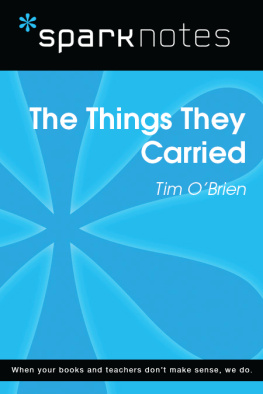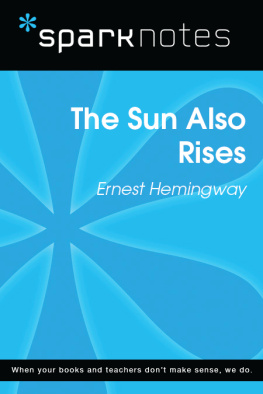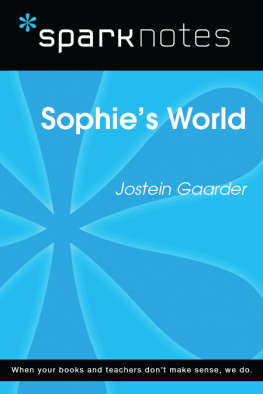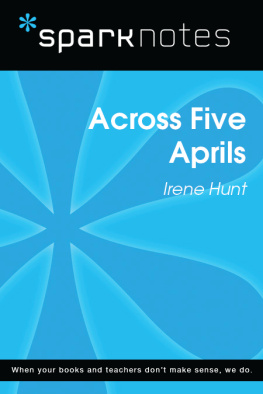SPARKNOTES and the distinctive SparkNotes logo are registered trademarks of SparkNotes LLC.
This 2020 edition printed for SparkNotes LLC by Sterling Publishing Co.
All rights reserved. No part of this publication may be reproduced,
stored in a retrieval system, or transmitted in any form or by any
means (including electronic, mechanical, photocopying, recording,
or otherwise) without prior written permission from the publisher.
For information about custom editions, special sales, and premium and corporate purchases, please contact Sterling Special Sales at .
Please email to report any errors.
CONTEXT
Margaret Atwood is one of Canadas most decorated and beloved authors. Although she has published several books of poetry and critical essays, Atwood remains best known for her many novels, two of which have received one of fictions most prestigious honors: the Booker Prize. Atwood was born in 1939 in Ottawa, Ontario, Canada, and she spent much of her childhood in the heavily forested areas of northern Quebec. An insatiable reader from childhood on, Atwood felt inclined to a writing career from an early age. She pursued literary studies at the University of Toronto, where she received a bachelors degree in 1961, and then at Harvard University, where she completed a masters degree in 1962. Atwood began work on a doctoral degree, but her dissertation, which she never finished, took a back seat as her writing career took off. She published her first book of poetry, Double Persephone, in 1961. Her first novel, The Edible Woman, appeared eight years later. Atwood has since published a number of significant novels, including The Handmaids Tale (1985), Cats Eye (1988), Alias Grace (1996), The Blind Assassin (2000), The Testaments (2019), and a trio of dystopian novels known collectively as the MaddAddam Trilogy (20032013).
Throughout her long and prolific career, Atwood has made a name for herself by depicting a diverse range of female characters, often portraying their struggles to survive the harsh and constricting conditions of a patriarchal society. In her first novel, The Edible Woman, Atwoods protagonist Marian comes to suspect that men have little real respect for her and would simply prefer to consume her before moving on to the next woman. Atwood takes her critique of patriarchal attitudes further in The Handmaids Tale, which offers a vision of a dystopian future in which women have lost nearly all of their agency to authoritarian male leaders. Many of Atwoods subsequent novels continue to explore the lives of different types of women. In Alias Grace, Atwood provides a fictionalized account of the notorious nineteenth-century Canadian murderess Grace Marks. The Blind Assassin weaves a mystery out of the lives of two sisters. Finally, The Penelopiad (2005) offers a feminist revision of Greek mythology told from the perspective of Odysseuss wife, Penelope, who looks back on her life from the land of the dead.
The publication in 1985 of The Handmaids Tale marked the beginning of Atwoods interest in speculative fiction, a broad category of fiction that imagines what could become of the world given the current social, political, and technological state of affairs. Although some critics believe that science fiction and fantasy belong under the umbrella of speculative fiction, Atwood distances herself from these genres. As she has stated in numerous public interviews, she understands science fiction as a genre that imagines a world filled with futuristic technologies that do not yet exist. By contrast, speculative fiction imagines events that could really happen given the political and technological means that are already part of our world. In the case of The Handmaids Tale, for example, Atwood explored the possibility of a near future in which a totalitarian state replaces the United States government and institutes the Republic of Gilead, a repressive patriarchal regime that strips women of their rights. The dystopian world Atwood imagines in The Handmaids Tale could potentially come to be, and this plausibility gives the novel both its power and relevance for contemporary readers.
In recent years, The Handmaids Tale achieved a new relevance which inspired a sequel: The Testaments. The resurgence of interest in The Handmaids Tale relates closely to the release of Hulus adaptation of the novel for television. The first three seasons of the show earned popular and critical acclaim, and they have drawn a new generation of readers to Atwoods work. As a response to the surge of renewed interest in The Handmaids Tale, Atwood decided to write a sequel to her landmark novel. The Testaments, which appeared in September 2019, returns readers to the dystopian world of Gilead approximately fifteen years after the events depicted in The Handmaids Tale. Instead of focusing on the fate of Offred, the protagonist from the earlier novel, the sequel follows three very different women whose lives converge at a crucial moment to exploit the weakness in Gileads oppressive theocratic regime. Like its predecessor, The Testaments has received widespread popular and critical praise. The novel also earned Atwood the second Booker Prize of her remarkable career.
PLOT OVERVIEW
The Testaments braids together three separate first-person testimonies, each of which corresponds to one of the novels three narrators. The first narrator, Aunt Lydia, composes her account in a manuscript known as The Ardua Hall Holograph. The other two narrators, Agnes and Daisy, each give spoken accounts, which appear in the novel as transcripts of witness testimonies. Each of the three narrators tells the story of her role in a conspiracy to topple the patriarchal and theocratic regime of the Republic of Gilead.
In The Ardua Hall Holograph, Aunt Lydia charts her rise to power within Gilead. Prior to the coup that brought down the United States government, Aunt Lydia had had an accomplished career as a judge. She tells of her arrest and her experience of being held in a stadium, where she watched as members of the new regime executed other professional women. As the days passed, Aunt Lydia saw that women were replacing men as the executioners.
One night, men came for Aunt Lydia and escorted her to a man named Commander Judd. He asked her if she would cooperate with the regime. When she hesitated, he dispatched her to several days of solitary confinement, after which she agreed to cooperate. Despite knowing that she would have to participate in the execution of other women, Aunt Lydia decided to do whatever was necessary to survive and take Gilead down from within. Alongside three other womenElizabeth, Helena, and Vidalashe became one of the Founders of the Aunts. The Founders were responsible for drafting and enforcing the laws that governed all women in Gilead. Aunt Lydia quickly gained dominance over the other Founders and sought ways to play the three against each other. In the time since Gileads founding, Aunt Lydia has established a vast network of surveillance equipment to collect evidence of others indiscretions.

